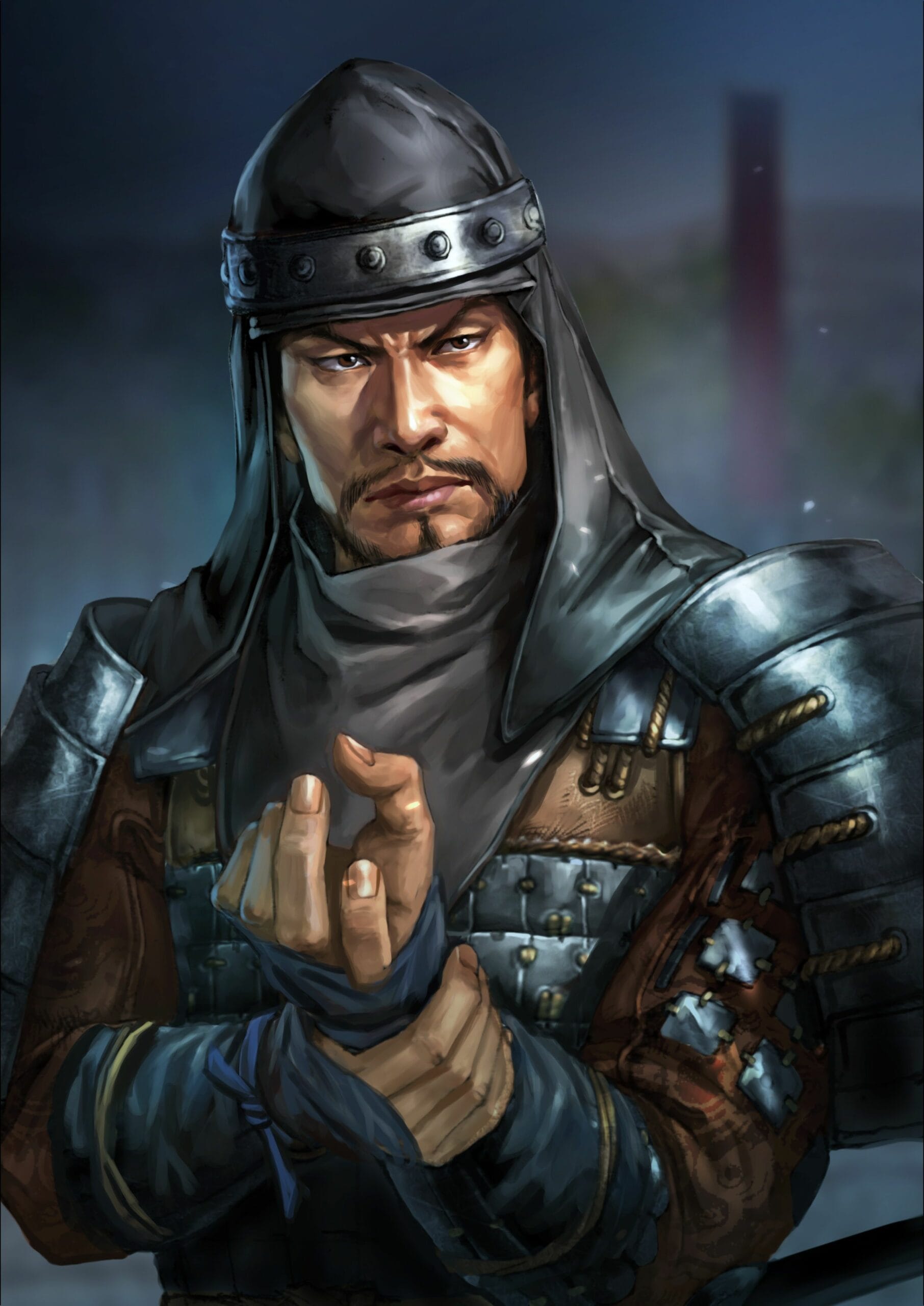Prepare to journey into the captivating realm of Hattori Hanzo, a figure shrouded in mystery and celebrated in legend. In our exploration of this legendary samurai and ninja master, we’ll peel back the layers of fact and fiction to reveal his enduring impact on Japanese history. From his unwavering devotion to Tokugawa Ieyasu to his exceptional military prowess and skill in espionage, Hattori Hanzo’s legacy continues to captivate and intrigue centuries after his passing. Join us as we embark on a journey to uncover the true essence of this enigmatic and extraordinary figure, shedding light on his enduring influence.
The Legend of Hattori Hanzo: Separating Fact from Fiction
You’ve probably encountered the name Hattori Hanzo before, perhaps in a movie, video game, or comic book. This iconic figure, often referred to as “Demon Hanzo,” has transcended history to become a legendary figure renowned for his almost superhuman abilities. However, as with any legend, the key to understanding the real man lies in separating the historical facts from the fictional embellishments.
Hattori Hanzo was, in fact, a real person who lived in 16th-century Japan. He was a highly skilled samurai and brilliant strategist who dedicated his life to serving the powerful Tokugawa clan. His knowledge of warfare and his leadership skills played a significant role in the Tokugawa clan’s rise to power. One particularly famous story tells of Hanzo saving the life of Tokugawa Ieyasu, solidifying his reputation as a fearless warrior and the ultimate protector.
The Demon Hanzo: Origins of a Nickname
Hattori Hanzo earned the moniker “Demon Hanzo” due to his exceptional prowess on the battlefield. He was widely respected, and feared, for his martial skills and tactical genius. As stories of his exploits spread, they became increasingly exaggerated, often depicting him as possessing superhuman speed, the ability to disappear into thin air, and other extraordinary skills. These tales, passed down through generations, solidified his status as a legendary figure and contributed to the enduring mystique surrounding ninjas in popular culture.
While Hanzo undoubtedly possessed exceptional fighting abilities and strategic intelligence, it’s important to acknowledge that some aspects of his legend have likely been embellished over time. While he may have had connections to the Iga ninja clan – a claim supported by some historical accounts – it’s unlikely he possessed the supernatural abilities often attributed to him in fiction.
Hattori Hanzo’s Enduring Legacy
Despite the embellishments, Hattori Hanzo’s impact on history and popular culture is undeniable. He is far more than a dusty figure relegated to history books; his legend continues to fascinate and inspire. Hanzo’s name has become synonymous with the samurai spirit, representing unwavering loyalty, incredible skill, and an air of captivating mystery.
To this day, Hattori Hanzo remains a prominent figure in movies, video games, and books. His story serves as a testament to the enduring power of legends and the human fascination with extraordinary individuals who leave an indelible mark on history.
Is Hattori Hanzo a Real Sword Maker?
The legend of Hattori Hanzo often depicts him as a master swordsmith, crafting magnificent blades for warriors like himself. However, the historical evidence supporting this claim is thin, at best.
While historical documents confirm Hanzo’s reputation as a fierce warrior, a brilliant strategist, and a master of espionage, they remain curiously silent on his alleged skills as a swordsmith. There is simply no concrete evidence to suggest he possessed this particular skill.
Several factors likely contributed to this association. Firstly, within samurai culture, swords were held in high regard, and skilled swordsmiths were revered figures. It’s easy to see how people might connect Hanzo’s military prowess with a deep understanding of these weapons, even if he wasn’t forging them himself.
Secondly, Hanzo’s larger-than-life reputation probably played a role. This was a man known as “Demon Hanzo” for his ferocity on the battlefield! It wouldn’t be a stretch to imagine him wielding a legendary blade, and over time, the distinction between wielding a masterpiece and crafting one can become blurred.
Of course, we can’t forget the influence of popular culture. Quentin Tarantino’s “Kill Bill” solidified the image of Hanzo as a secluded, almost mythical swordsmith in the minds of many. The film’s depiction of him forging a unique katana for Uma Thurman’s character undeniably fueled the misconception.
So, while Hattori Hanzo was undoubtedly a fascinating and influential figure in Japanese history, his skills likely lay more in strategy and combat than at the forge. However, the enduring legend of Hattori Hanzo, the swordsmith, speaks volumes about the power of cultural narratives and the enduring fascination with this enigmatic warrior.
Why Was Hattori Hanzo Famous?
Hattori Hanzo was more than just a skilled samurai; he was a legend whose fame spread throughout Japan due to his exceptional abilities in battle and his unwavering dedication to his leader, Tokugawa Ieyasu. His position could be compared to that of a famous general or a highly influential military advisor—someone whose strategic mind and actions could alter the course of history.
One of the primary reasons for Hanzo’s enduring fame was his strategic brilliance. He wasn’t simply a skilled swordsman; he possessed a deep understanding of warfare and could anticipate his enemies’ movements. This strategic mind was instrumental in helping Tokugawa Ieyasu rise to power and eventually become the Shogun, the supreme military leader of Japan.
Hanzo’s fame wasn’t solely due to his exploits in open warfare. He was also a master of espionage and covert operations, often compared to a real-life ninja. He led a special group of warriors from Iga, a region renowned for its stealthy and highly skilled fighters. These warriors were experts in spying, sabotage, and stealth tactics, striking fear into their enemies, who often wouldn’t even know they were present until it was too late.
Perhaps the most defining moment in Hattori Hanzo’s career, the event that cemented his place in the annals of history, was his daring rescue of Tokugawa Ieyasu during the Battle of Iga in 1582. Ieyasu found himself surrounded by enemies, his life hanging precariously in the balance. It was then that Hanzo and his elite Iga warriors emerged, fighting their way through the chaos and successfully bringing Ieyasu to safety. This act of extraordinary courage and unwavering loyalty instantaneously transformed Hanzo into a living legend.
As centuries passed, the stories of Hattori Hanzo’s exploits became increasingly intertwined with myths and legends. People whispered tales of his near-superhuman abilities, elevating him to the status of a folk hero.
Even today, centuries after his time, Hattori Hanzo’s name continues to surface in movies, video games, and books. He has become a global icon, symbolizing skill, loyalty, and an air of captivating mystery. The fact that his story still resonates with audiences across the world demonstrates the profound impact Hattori Hanzo had on Japanese history and culture.
Was It a Hattori Hanzo Sword in Pulp Fiction?
In Quentin Tarantino’s cult classic film Pulp Fiction, there’s a memorable scene where Butch Coolidge, played by Bruce Willis, urgently needs a weapon. He bursts into a pawn shop and grabs the first thing that catches his eye: a gleaming katana prominently displayed on the wall. The pawnshop owner, in his characteristically eccentric manner, implies that this is no ordinary blade, muttering the words, “Hattori Hanzo steel.”
This brief scene adds a layer of intrigue and badassery to Butch’s character. However, it also begs the question: was that really a Hattori Hanzo sword, forged centuries ago by the legendary Japanese swordsmith?
The answer, much like many things in Tarantino’s films, is more nuanced than a simple yes or no. Tarantino is a director known for his masterful blending of fact and fiction, creating unique and often interconnected cinematic universes. And when it comes to Hattori Hanzo, there’s a significant amount of legend intertwined with historical fact.
As we’ve already established, the historical Hattori Hanzo was a highly skilled samurai and strategist who lived in 16th-century Japan. However, there’s no historical evidence to suggest he was also a swordsmith. So, where did this association originate? It likely stems from his legend evolving over time, with books and films romanticizing his character and embellishing his real-life accomplishments.
Now, returning to that enigmatic sword in Pulp Fiction, Tarantino never explicitly confirms its authenticity. There are no visible markings or inscriptions, and no expert steps in to verify its origins. It’s left entirely up to the viewer’s interpretation.
Some viewers argue that the sword’s craftsmanship and menacing appearance suggest it could be a genuine Hattori Hanzo creation. They argue that a sword worthy of such a legendary figure would undoubtedly be something extraordinary.
Others are more skeptical, suggesting that Tarantino included the sword as a symbolic element, adding a layer of coolness and mystique to the scene without explicitly confirming its historical accuracy.
The debate surrounding the sword’s authenticity is part of what makes Pulp Fiction such an enduring and captivating film. Tarantino leaves clues and hints sprinkled throughout his films, inviting viewers to engage in speculation and draw their own conclusions.
So, was it a genuine Hattori Hanzo sword? Perhaps, perhaps not. The beauty of Tarantino’s storytelling lies in its ambiguity, leaving us to ponder the possibilities long after the credits roll.
For those intrigued by the world of paranormal investigation and the life of Hans Holzer, a renowned paranormal researcher, you can learn more about his fascinating journey and experiences here. Additionally, our website features an article on recent updates regarding the case of Hans Schmidt, which you can find here.















